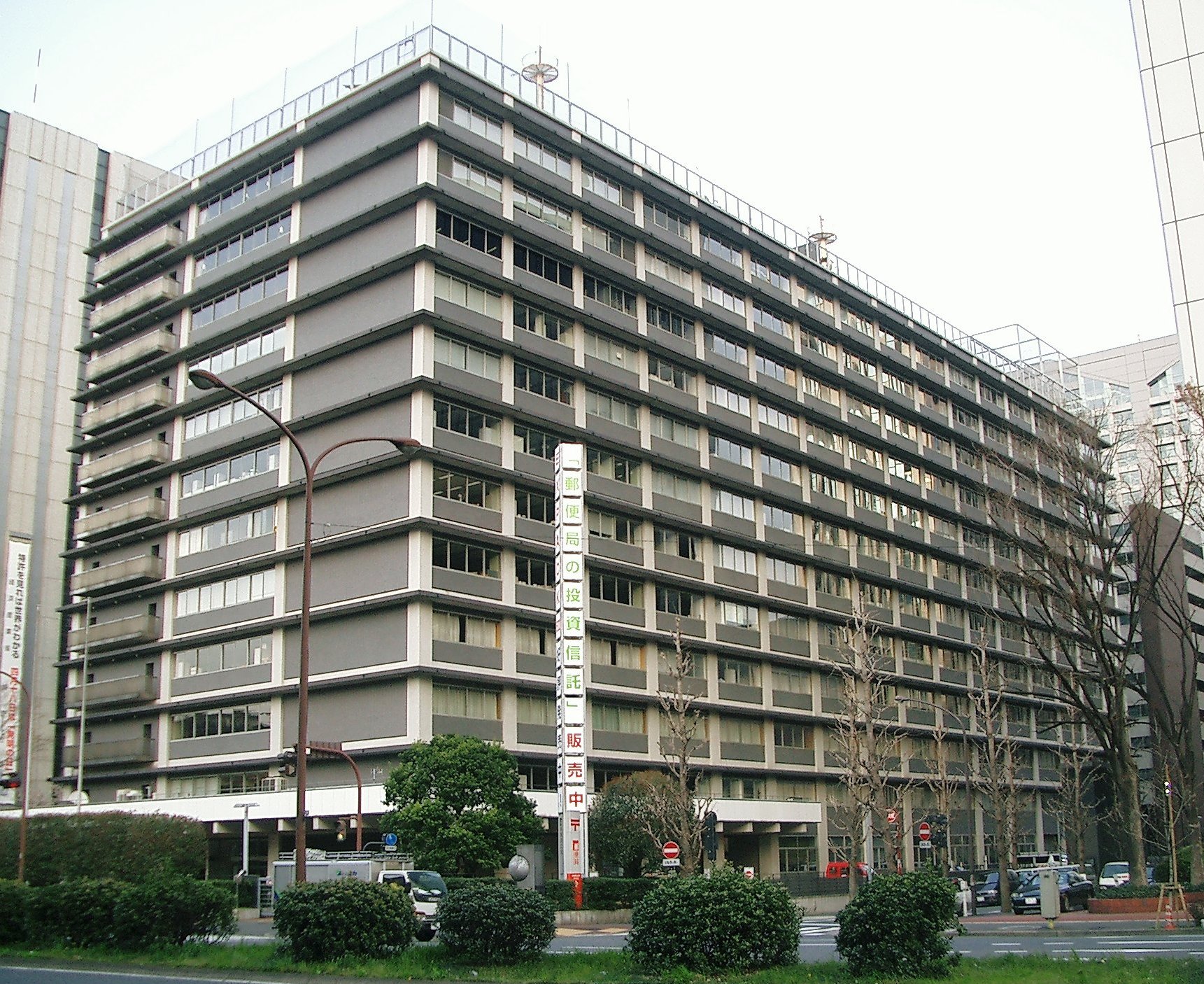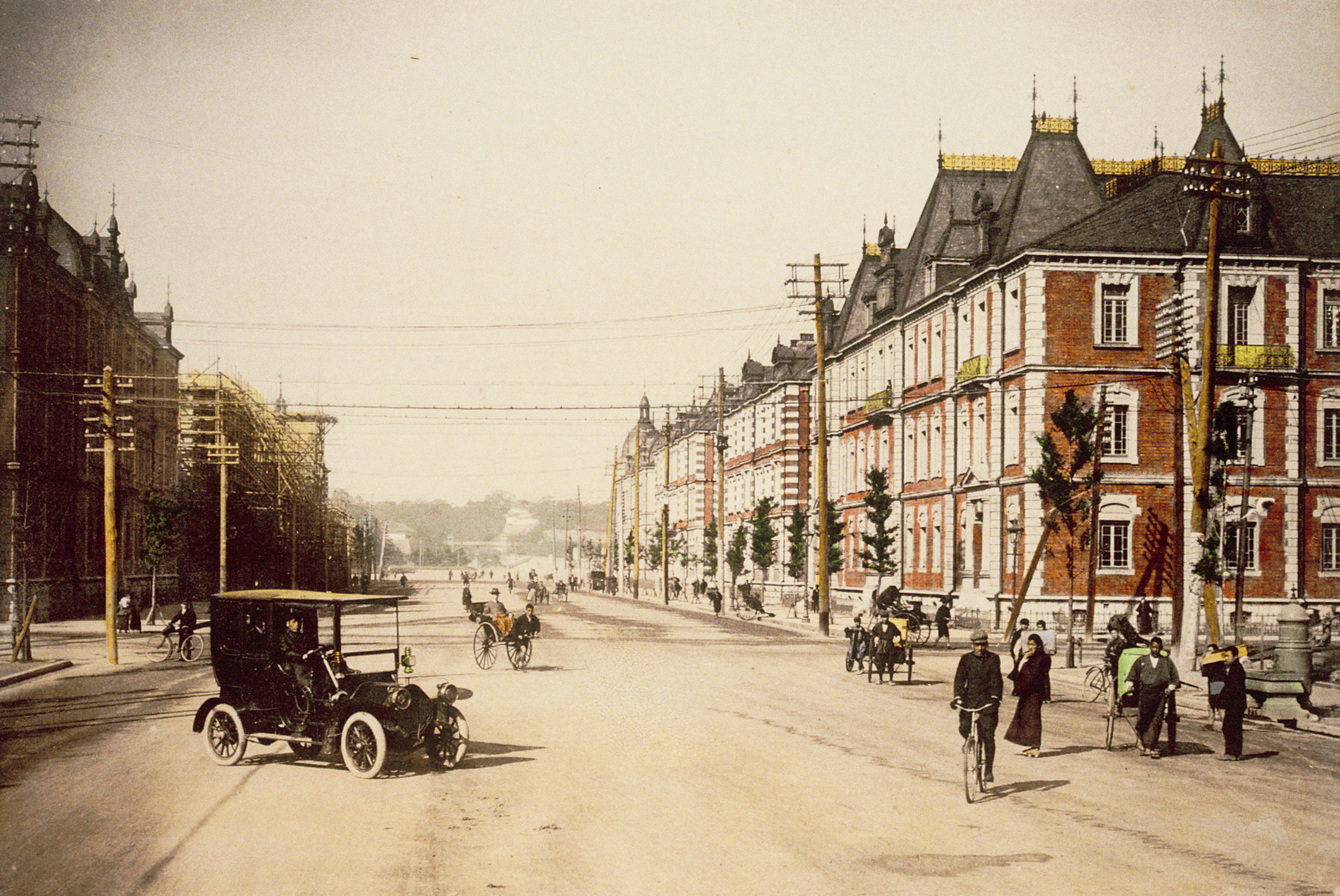|
Mitsui OSK Lines
Mitsui O.S.K. Lines ( ja, 株式会社商船三井, Kabushiki-gaisha Shōsen Mitsui; abbreviated MOL) is a Japanese transport Company (law), company headquartered in Toranomon, Minato, Tokyo, Japan. It is one of the largest shipping companies in the world. MOL fleet includes dry cargo ships (bulk carriers), liquefied natural gas carriers, Roll-on/roll-off, Ro-Ro Car Carrier ships, oil Tanker (ship), tankers, Containerization, container ships (among which mv MOL Triumph is the 4th largest containership in the world), and container terminals. Its alligator logo can still be seen on containers in ports, roads, rails and barges around the world, despite the company's focus on containers shipping has been reduced since April 2018. Founded as a key part of the Mitsui ''zaibatsu'' (family-owned Conglomerate (company), conglomerate) during the early industrialization of Japan, the company is now independent of the zaibatsu, but remains part of the Mitsui ''keiretsu'' (group of aligned c ... [...More Info...] [...Related Items...] OR: [Wikipedia] [Google] [Baidu] |
Public Company
A public company is a company whose ownership is organized via shares of stock which are intended to be freely traded on a stock exchange or in over-the-counter markets. A public (publicly traded) company can be listed on a stock exchange (listed company), which facilitates the trade of shares, or not ( unlisted public company). In some jurisdictions, public companies over a certain size must be listed on an exchange. In most cases, public companies are ''private'' enterprises in the ''private'' sector, and "public" emphasizes their reporting and trading on the public markets. Public companies are formed within the legal systems of particular states, and therefore have associations and formal designations which are distinct and separate in the polity in which they reside. In the United States, for example, a public company is usually a type of corporation (though a corporation need not be a public company), in the United Kingdom it is usually a public limited company (plc ... [...More Info...] [...Related Items...] OR: [Wikipedia] [Google] [Baidu] |
Alligator
An alligator is a large reptile in the Crocodilia order in the genus ''Alligator'' of the family Alligatoridae. The two extant species are the American alligator (''A. mississippiensis'') and the Chinese alligator (''A. sinensis''). Additionally, several extinct species of alligator are known from fossil remains. Alligators first appeared during the Oligocene epoch about 37 million years ago. The name "alligator" is probably an anglicized form of ', the Spanish term for "the lizard", which early Spanish explorers and settlers in Florida called the alligator. Later English spellings of the name included ''allagarta'' and ''alagarto''. Evolution Alligators and caimans split in North America during the early Tertiary or late Cretaceous (about 53 million to about 65 million years ago). The Chinese alligator split from the American alligator about 33 million years ago and probably descended from a lineage that crossed the Bering land bridge during the Neogene. The moder ... [...More Info...] [...Related Items...] OR: [Wikipedia] [Google] [Baidu] |
Hirose, Saihei
Saihei Hirose (June 16, 1828 – 1914) was a Japanese mining businessman and former head of the board of directors of Sumitomo Zaibatsu from 1877 to 1894. Prior to that, he was manager of the Besshi Copper Mine, which he extensively modernised using Western technology. There is a museum dedicated to him in Niihama 270px, Niihama City Hall 270px, Aerial View of Central Niihama is a city located in the eastern part of Ehime Prefecture, Japan. , the city had an estimated population of 115,824 in 57781 households and a population density of 490 persons per ..., called the Hirose Memorial Museum. References 1828 births 1914 deaths Japanese mining businesspeople {{Japan-business-bio-stub ... [...More Info...] [...Related Items...] OR: [Wikipedia] [Google] [Baidu] |
Japan Post
was a Japanese statutory corporation that existed from 2003 to 2007, offering postal and package delivery services, banking services, and life insurance. It's the nation's largest employer, with over 400,000 employees, and runs 24,700 post offices throughout Japan. One third of all Japanese government employees work for Japan Post. As of 2005, the President of the company was Masaharu Ikuta, formerly Chairman of Mitsui O.S.K. Lines Ltd. Japan Post ran the world's largest postal savings system and is often said to be the largest holder of personal savings in the world: with ¥224 trillion ($2.1 trillion) of household assets in its ''yū-cho'' savings accounts, and ¥126 trillion ($1.2 trillion) of household assets in its ''kampo'' life insurance services; its holdings account for 25 percent of household assets in Japan. Japan Post also holds about ¥140 trillion (one fifth) of the Japanese national debt in the form of government bonds. On October 1, 2007, Japan Post wa ... [...More Info...] [...Related Items...] OR: [Wikipedia] [Google] [Baidu] |
Privatization
Privatization (also privatisation in British English) can mean several different things, most commonly referring to moving something from the public sector into the private sector. It is also sometimes used as a synonym for deregulation when a heavily regulated private company or industry becomes less regulated. Government functions and services may also be privatised (which may also be known as "franchising" or "out-sourcing"); in this case, private entities are tasked with the implementation of government programs or performance of government services that had previously been the purview of state-run agencies. Some examples include revenue collection, law enforcement, water supply, and prison management. Another definition is that privatization is the sale of a state-owned enterprise or municipally owned corporation to private investors; in this case shares may be traded in the public market for the first time, or for the first time since an enterprise's previous nati ... [...More Info...] [...Related Items...] OR: [Wikipedia] [Google] [Baidu] |
Masaharu Ikuta
is a Japanese businessman from Kobe. He graduated from Keio University in 1957. He was the former CEO of Mitsui O.S.K. Lines, and served as the president of the Japan Postal Agency 2003 to March 2007. He was named the honorary consul to the Republic of Mauritius in 2002, and he is a member of the Trilateral Commission The Trilateral Commission is a nongovernmental international organization aimed at fostering closer cooperation between Japan, Western Europe and North America. It was founded in July 1973 principally by American banker and philanthropist David .... since 1998 he served as an independent non-executive director of Dah Sing Financial Holdings Ltd. References 1935 births Japan Post Holdings Japanese chief executives Keio University alumni Living people People from Kobe {{Japan-business-bio-stub ... [...More Info...] [...Related Items...] OR: [Wikipedia] [Google] [Baidu] |
Keiretsu
A is a set of companies with interlocking business relationships and shareholdings. In the legal sense, it is a type of informal business group that are loosely organized alliances within the social world of Japan's business community. The ''keiretsu'' system dominated the Japanese economy for the second half of the 20th century, following the dissolution of the '' zaibatsu'' after World War II, and, to a lesser extent, continues to do so in the early 21st century. The members' companies own small portions of the shares in each other's companies, centered on a core bank; this system helps insulate each company from stock market fluctuations and takeover attempts, thus enabling long-term planning in projects. It is a key element of the manufacturing industry in Japan. History The prototypical ''keiretsu'' appeared during the Japanese economic miracle which followed World War II, amid the dissolution of family-controlled vertical monopolies called '' zaibatsu''. The ''zai ... [...More Info...] [...Related Items...] OR: [Wikipedia] [Google] [Baidu] |
Industrialization Of Japan
The , referred to at the time as the , and also known as the Meiji Renovation, Revolution, Regeneration, Reform, or Renewal, was a political event that restored practical imperial rule to Japan in 1868 under Emperor Meiji. Although there were ruling emperors before the Meiji Restoration, the events restored practical abilities and consolidated the political system under the Emperor of Japan. The goals of the restored government were expressed by the new emperor in the Charter Oath. The Restoration led to enormous changes in Japan's political and social structure and spanned both the late Edo period (often called the Bakumatsu) and the beginning of the Meiji era, during which time Japan rapidly industrialized and adopted Western ideas and production methods. Foreign influence The Japanese knew they were behind the Western powers when US Commodore Matthew C. Perry came to Japan in 1853 in large warships with armaments and technology that far outclassed those of Japan, with ... [...More Info...] [...Related Items...] OR: [Wikipedia] [Google] [Baidu] |
Conglomerate (company)
A conglomerate () is a multi-industry company – i.e., a combination of multiple List of legal entity types by country, business entities operating in entirely different industries under one corporate group, usually involving a Holding company, parent company and many Subsidiary, subsidiaries. Conglomerates are often large and Multinational corporation, multinational. United States The conglomerate fad of the 1960s During the 1960s, the United States was caught up in a "conglomerate fad" which turned out to be a form of Economic bubble, speculative mania. Due to a combination of low interest rates and a repeating bear-bull market, conglomerates were able to buy smaller companies in leveraged buyouts (sometimes at temporarily deflated values). Famous examples from the 1960s include Ling-Temco-Vought,. ITT Corporation, Litton Industries, Textron, and Teledyne. The trick was to look for acquisition targets with solid earnings and much lower price–earnings ratios than the acqu ... [...More Info...] [...Related Items...] OR: [Wikipedia] [Google] [Baidu] |
Zaibatsu
is a Japanese term referring to industrial and financial vertically integrated business conglomerates in the Empire of Japan, whose influence and size allowed control over significant parts of the Japanese economy from the Meiji period until the end of World War II. A ''zaibatsu'' general structure included a family-owned holding company on top, and a bank which financed the other, mostly industrial subsidiaries within them. Although the ''zaibatsu'' played an important role in the Japanese economy from the 1860s to 1945, they increased in number and importance following the Russo-Japanese War of 1904–1905, World War I and Japan's subsequent attempt to conquer East Asia during the inter-war period and World War II. After World War II they were dissolved by the Allied occupation forces and succeeded by the '' keiretsu'' (groups of banks, manufacturers, suppliers, and distributors). Equivalents to the ''zaibatsu'' can still be found in other countries, such as the '' chaeb ... [...More Info...] [...Related Items...] OR: [Wikipedia] [Google] [Baidu] |




